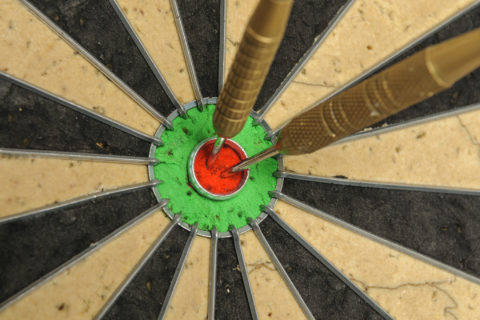Part of my role as a marketing science person is serving as an intermediary between marketing research practitioners and academics in marketing and other fields. This has been a wonderful learning experience for me. Academics are great sources of new ideas. They also often do the same things practitioners do but in more efficient and effective ways.
Much of academia escapes the attention of practitioners, however. Academics are typically writing for, or presenting to, other academics. Their language is often technical, and their methods can seem arcane to us. It can be difficult for marketing researchers to make sense of articles in academic journals or papers presented at academic conferences. Moreover, much of it is theoretical. I recall a contact with an MBA from a prestigious program commenting that getting too close to the real world was discouraged in business academia. In my contact’s assessment, scholars are encouraged to keep a scholarly distance from business reality.
There are indeed Ivory Tower types, but there are also academics who are intensely curious about what ordinary folks like me are up to. They frequently take on consulting assignments, and are very much in touch with the real world of marketing and marketing research as we know it. They understand that we are not the doctoral candidates they supervise and are skilled at communicating complex ideas in plain language. Many seem to find the Ivory Tower confining. I only wish there were more of them.
Generally speaking, scholars are more adept than most of us at conceptualizing systemically and probabilistically. What does that mean? Put in a marketing context, many things can influence shopping and buying behavior, including past shopping and buying behavior and, in this sense, consumer behavior resembles a system of interrelated variables. Thinking of consumer behavior as a system helps us understand it, and predict behaviors we’re interested in. Secondly, consumer behavior cannot be explained and predicted deterministically from first principles. We can only make probabilistic statements – educated guesses – about what causes consumers to behave in the ways they do and how they will behave in the future.
Through their consulting, “real-world academics” (as I call them) have access to C-Level and internal data, something few practitioners enjoy. This provides them with an insider’s view of corporate culture and decision-making. By contrast, many marketing researchers mainly sell canned methodologies or software, and know little about their clients’ organization or industry. In these respects, it’s the practitioners who are out of touch.
… Marketing research would benefit if academics – the real-world types – had a stronger influence on how marketing research is conducted.
I feel marketing research would benefit if academics – the real-world types – had a stronger influence on how marketing research is conducted. There are several ways I believe they can achieve this, mainly though articles, blogs, seminars and podcasts.
One is by publishing synopses of their research findings in layman’s language in widely read marketing publications, or with short podcasts on selected topics. Some academics already do this, and I wish more did. I have found these articles and podcasts very informative.
A second way would be to contrast common marketing research practice with other approaches and demonstrate the potential impact on decisions. An example would be comparing simple cross tabulations with statistical methods used in econometrics and psychometrics. Though an essential part of exploratory data analysis (EDA), cross tabs can be misleading since they only look at two variables at a time, and pouring through zillions of cross tabs increases the risk of fluke findings. One predictable result is that clients can squander valuable time, energy and budget chasing randomness.
Complex isn’t necessarily better, though, and some marketing research applications of multivariate statistics and machine learning are open to criticism for cutting corners or over promising. This is another area where academic judgement would be helpful.
A related idea is to show how different AI can produce quite dissimilar results given identical data. This is important, as I sense some marketing researchers do not realize this. AI are computer programs, and who has programmed them and how they’ve been programmed matters a great deal. Moreover “AI” and “machine learning” are often just chic labels for standard programming and statistics, and not everyone seems to be aware of this.
A fourth way for scholars to flex their muscles would be to show how integrating data from several sources, combined with the right analytics, can provide more actionable information than running multiple projects piecemeal. Many marketing researchers now realize this, but fewer seem to have gotten the hang of it. It’s seldom as easy as 1-2-3.
This is a big subject, and other marketing researchers may have opinions quite different from mine. However, it’s hard to deny there are many significant gaps, and I believe the first step is for more academics and practitioners to recognize this. Academics can learn from us, too.


